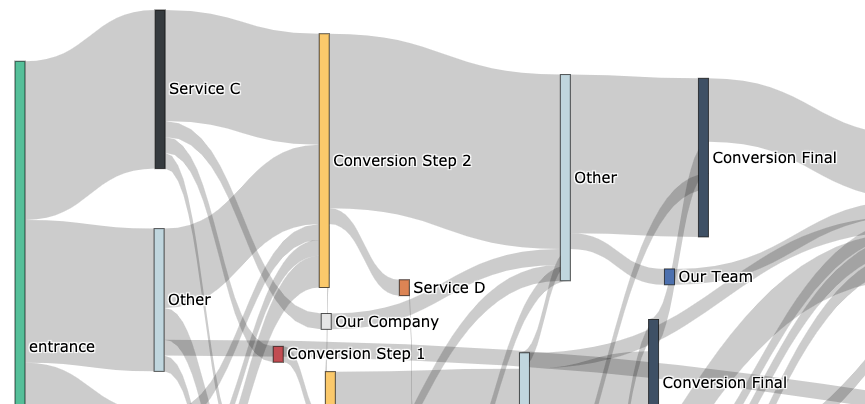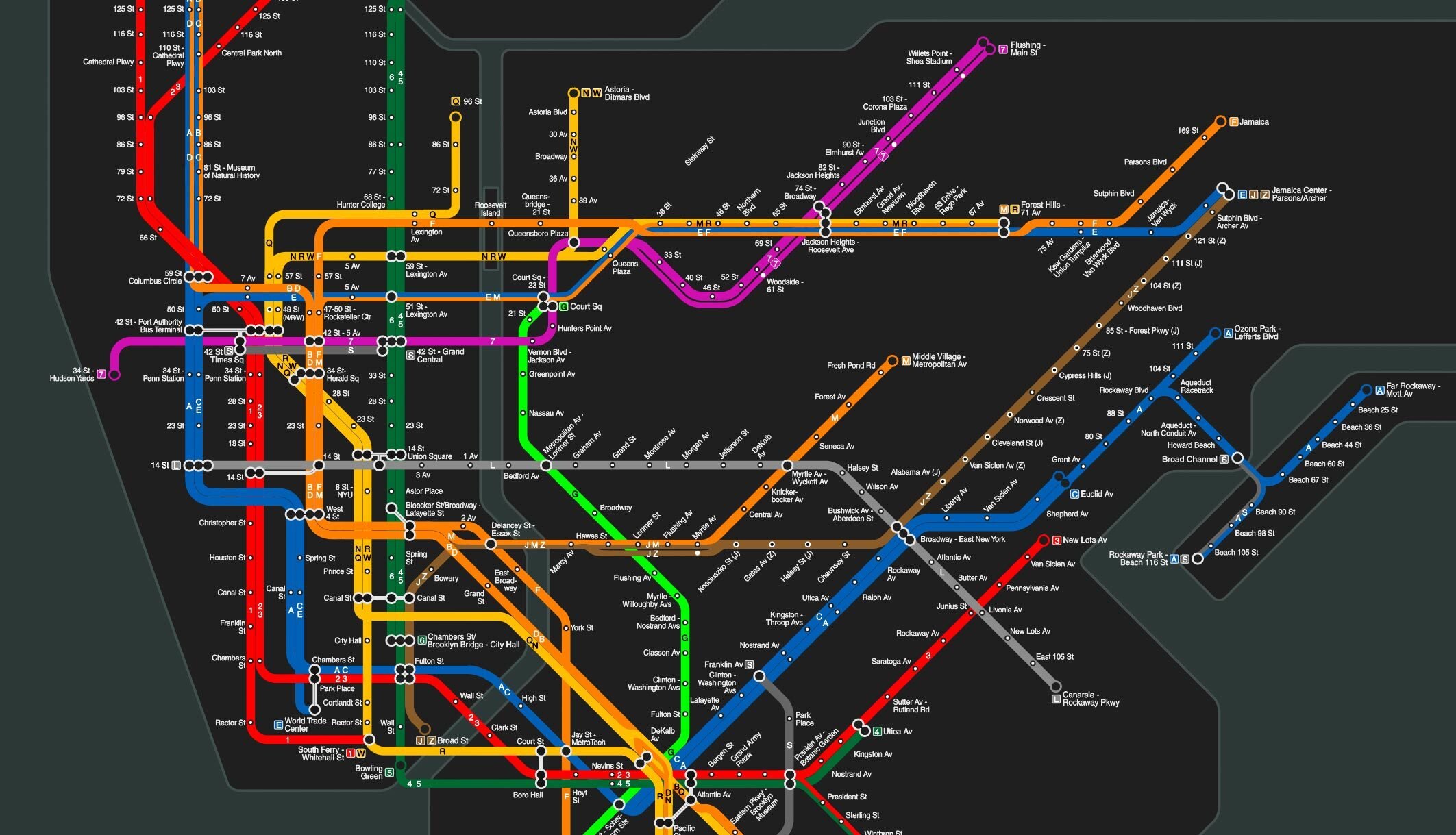Analytics Blog

Customer Journey Insights from Path Analysis
Have you ever wondered how customers navigate through your website? Do you ask yourself: “What do my customers do most often?” and “Which customer journeys are optimal?” I hear these types of questions often, and there are several customer journey data mining methodologies to answer them effectively.
Customers are exhibiting an immense amount of random navigation behavior when they visit your website or app; I didn’t always think this. Years ago when I worked alongside e-commerce clients to ensure the purchasing path was clear and roadblock-free, I made the assumption about the sequence of pages a customer would venture through, something along the lines of:
- A customer enters the site from an SEO-laden landing page
- They view a product to confirm it matches their criteria
- They add it to their cart
- They march through the checkout steps
Looking back on this assumption, I realized this was the customer journey the business owner wanted. While it made sense then to ensure the “desired” path towards an e-commerce order was easy to follow, in reality, the various customer journeys along the road to conversion were much more complex.
Today, knowing the recognized “four customer personas: Competitive, Spontaneous, Humanistic, Methodical,” I still find myself scratching my head as I attempt to visualize the various sequences of pages visitors go through. Individualism prevails, and every visitor has their own objective and purpose for how they visit a site and end up completing our desired conversion decision.
If you’re not familiar with the four personas, allow me to digress and loosely summarize them below:
- Competitive. This visitor is comparing you to everyone else
- Spontaneous. This visitor wants your product now — done!
- Humanistic. This visitor is evaluating you and considering why they should buy from you
- Methodical. This visitor is slow, deliberate, and detail-oriented
How do we know if these personas are representative within a website today? How do we recognize common, or even optimal paths, and journey patterns? I wanted to answer these types of questions to be able to understand how people traverse websites — ultimately to determine how to uncover insights from customer journey data mining.
Visually Inspecting Customer Journey Data

My early attempts at customer journey analysis used an evaluation copy of a very comprehensive visitor path visualization tool. What I thought might provide simple visuals for path analysis turned into much more — a way to recognize visitor behavior groupings and roadblocks that could be cleared for improved flow. Indeed, a process referred to as “customer journey data mining” set the stage for actionable insight.
An Example of Persona Insight
As a relevant example, Blast has been publishing insight articles fairly regularly, adding new articles covering a multitude of customer experience and analytics topics. The question I sought to answer: “What do visitor journeys through our insight articles look like?” This question is indeed similar to other open-ended questions our customers ask. Now, with a specific section of the website in mind, I could focus my customer journey analysis on that isolated traffic.
When I used a customer journey data visualization tool to filter path data to look deeper, I noticed two distinct groups of visitors when reviewing a section of a path flow diagram. There was a group of visitors that “looped” around the insight article’s parent page, allowing them to visit several individual insight articles and return back. Clearly a segment of visitors that were methodical, on an information gathering journey. Also visible were a second segment of visitors. Off screen of the visual shown below were several paths showing how visitors would come to a specific insight article then exit the site. The customer journey insight from discovery of the first segment of visitors led me to suggest a potential user experience (UX) update to the parent page where a call to action could be highlighted to encourage visitors to sign up to receive email updates when new articles are published.
An Example of Journey Purpose Insight
A common question clients ask is “What drives conversions?” — or in path analysis terms, “What pages or sequence of pages do visitors see before they convert?” To seek out insight, I wanted to do a deeper dive into user journey paths using Sankey diagrams.
Looking at the data from one of Blast’s business to business (B2B) customers, I selected data spanning a few months where a visitor completed a key performance indicator (KPI) conversion step, contacting the business through an online form submission. The key to this customer journey data mining extraction was to have access to clickstream, timestamped data and be able to construct a visual. A technique I used to produce a cleaner data visualization was to collapse groups of nodes (essentially, page views or events each visitor exhibited) into categories. I found this technique easier to visualize the broad steps taken and to uncover popular paths based on flow volume.

The initial insight I gained from the left (entrance) side of the Sankey diagram was confirming there are a wide variety of entry points. There are many ways visitors find and land on your site. In fact, landing pages with specific purposes can be called out as a group or as specifically targeted cohorts, when categorizing page nodes for this diagram. It’s visually easy to see popular entrance groups.
The next insight was recognizing that about 30% of visitors ended up at known stages of the desired conversion funnel on the first page, and almost 90% of visitors were on the road to conversion within 2 steps.
This is an important discovery as sometimes the desired KPI can be achieved by designing strategic search engine optimization and page sequencing — optimize the customer journey to the desired outcome short and free of speed bumps.
While looking at part of the Sankey diagram, I found myself focusing on a single path and saying “What did a specific group of visitors do here?” and answers became clearer. Below I can see “Service C” is the dominant offering for this client, and a significant number of that cohort proceeded towards the second step of the conversion path. What we thought had been the perceived “step 1” turned out to be an incorrect assumption — here, visitors traversed into a deeper funnel step.

If you recall, one of the customer journey personas from above was Humanistic — the visitors that want to relate to the people and get a feel for how you do business. This cohort can be seen when along the path we see smaller groups of visitors splitting off to see details about “Our Company” and “Our Team.”
Again, this type of discovery is difficult to do without the assistance of a good visual tool. And frankly, while any visual customer journey path tool can be a bit overwhelming at first glance, systematic focusing of cohorts helps highlight the key paths.
Why and How to Approach Customer Journey Data Mining
The key takeaways from my foray into customer journey path analysis is to only approach it with a specific, targeted, set of questions to be answered. Be ready to focus only on analyzing key touchpoints or conversions. Extracting path data too broadly gives you journey diagrams that resemble the subway system in New York — unreadable and you end up getting on the wrong train.
The key takeaways from a customer journey path analysis is to only approach it with a specific, targeted, set of questions to be answered. Click & Tweet!
As much as I wanted to use a mathematical modeling approach to find “optimal” paths, it struck me as less insightful than just traversing a visual. Think of it this way: the nuances from the less obvious paths are more insightful than focusing where number crunching points you.
 By Alargule – Own work, CC BY-SA 3.0, https://commons.wikimedia.org/w/index.php?curid=10781742
By Alargule – Own work, CC BY-SA 3.0, https://commons.wikimedia.org/w/index.php?curid=10781742
If within your website you’re assuming visitors follow an anticipated flow, extract data around those key entry and exit paths to see if your assumptions are accurate or if there are paths that sidetrack your visitors. Use your analytic suite of reports — landing page reports, conversion reports, etc. — as a guide on where to begin. If you quickly find aberrant or alternative reasons for a visitor coming to a site, narrow down to explore only those that make it through the maze. Since different visitors can arrive at a conversion step in different ways, there exists an opportunity to understand how different customer journeys unfold.
The hope in understanding the customer journey is ultimately to gain insight into your customer behavior — to detect and remove any roadblocks, to add value to steps where paths merge, to recognize the commonalities among visiting cohorts — all leading to flow enhancement and systematic improvement.
The hope in understanding the customer journey is ultimately to gain insight into your customer behavior… Click & Tweet!
If you want to pursue this type of customer journey data mining with Blast, please reach out to us today — and like our client’s site above, within two steps preferably.








